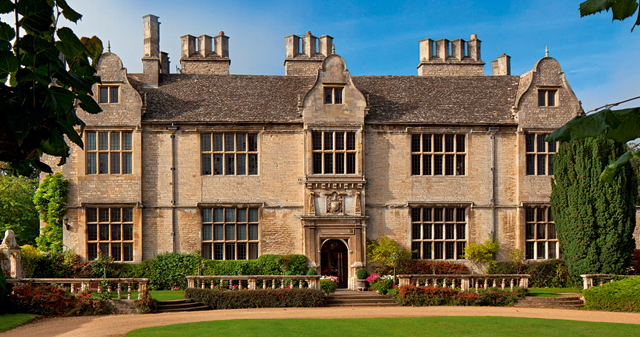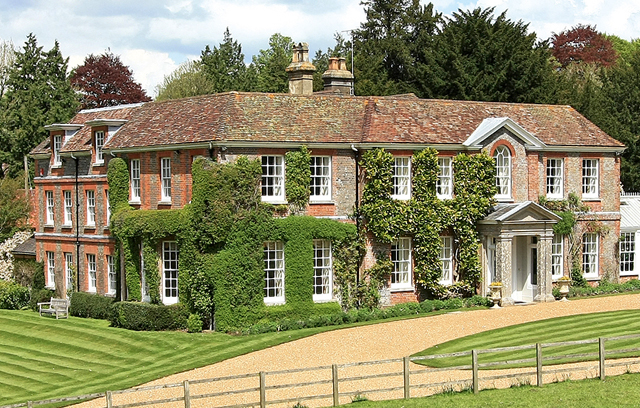Country house property market year in review
Penny Churchill takes a look back at the rollercoaster property market of 2014.


When in the latter half of 2013, the country-house market appeared to slip into gear after five years in the doldrums, vendors and agents alike were hopeful that the pre-Christmas surge would carry through into the new Year and beyond. Sadly, the expected ‘ripple effect’ of a decrease in the rate of London house-price inflation sending a wave of cash-rich Londoners out into the shires in search of country bargains again failed to materialise.
Recent research from Knight Frank suggests that the surge of activity seen in the country market in the first half of 2014 ran out of steam in the latter part of the year. The slowdown was attributed to a combination of factors: uncertainty over the outcome of the General election, the threat of an impending interest rate rise, tighter controls on mortgage lending and the unnerving ongoing debate about ‘mansion tax’.
Affluent London homeowners continued to sit tight and even those families who finally decided to ‘go for it’ and move out of the centre tended to cling to the skirts of the capital. Established commuter towns in the inner home Counties were the main beneficiaries, say Knight Frank, with towns such as Elmbridge and Guildford in Surrey and Maidenhead and Windsor in Berkshire seeing the biggest influx of property millionaires.
That’s not to say that nothing was happening out in the country. On the contrary, the market for houses priced at less than £2 million was generally buoyant in 2014, with a handful of hotspots, notably Oxford and Cambridge, seemingly unaffected by the general mood of uncertainty. Many, although by no means all, of the special houses launched on the market in 2014 at more than £2m sold well and quickly. At the lower end of the price spectrum, Worcestershire agent Andrew Grant reported the sale of 146 houses, at prices ranging from £350,000 to £2m, in the month of September alone.
On the other hand, you could count the number of country houses and estates sold for more than £20m on the fingers of one hand and those sold for £15m to £20m on the fingers of two, reports Crispin Holborow of Savills. There was many a slip between Champagne glass and lip as prospective purchasers failed to complete on agreed sales. On a more positive note, this resulted in several lucky vendors pocketing buyers’ often substantial deposits when jittery lenders chose the 11th hour to change their minds about their side of the deal. Once again, this year, the gold standard was set by farmland, despite some 20% less land being sold on the open market than in 2013, according to the latest land-market intelligence from Bidwells. May saw probably ‘the most significant UK land transaction in living memory’, with the sale of the Co-operative Group’s farming portfolio of some 17,800 freehold acres across seven principal estates (plus a farming business operating over a further 20,000 acres) to UK-based The Wellcome Trust for £249m.
For farmland investors, biggest is definitely best, say Bidwells, citing the example of the prime, 1,618-acre Nordelph Farm on the Norfolk/Cambridgeshire border, which sold in February for more than £20m, against a guide price of £15.75m. Interestingly, the activity in the farmland market is largely being driven by investors using cash, rather than bank borrowings, to fund their purchases. But buyers prepared to pay top dollar will continue to target only the best farms, potentially increasing the difference in prices paid between the good and the not-so-good farms, Bidwells predict.
That principle applied to a number of important country-house sales, in which sometimes the only way to achieve a successful outcome was to include some additional land and a cottage or two. This was the background to the sale this year of dreamy Nether Worton House (Fig 1) in the Oxfordshire Cotswolds, which came to the market in June 2013, for the first time in 87 years, at a guide price of £8m for the Grade I*-listed, castellated manor house, with 11 acres of gardens and grounds. It was smiles all round when the vendors, who owned the surrounding estate, agreed to negotiate on some further amenity land and estate cottages, reveals Mr Holborow.
Exquisite houses, the beauty of Nature, and how to get the most from your life, straight to your inbox.

International buyers continue to play a major role at the upper end of the Oxfordshire country-house market. Mark Charter of Carter Jonas in Oxford was agreeably surprised at the response from overseas purchasers to the launch in late March, at a guide price of £10m, of historic, Grade II*-listed Yarnton Manor (Fig 2) in the pretty village of Yarnton, halfway between Oxford and Woodstock. Although sold as a high-level manor-house campus, with more than 35,000sq ft of accommodation set in some 30 acres of land, the impressive Jacobean mansion, remodelled by Sir Thomas Spencer in 1611, has obvious potential for residential or commercial development, a fact not lost upon the many international parties who expressed an interest.
Commenting on the sale, which was swiftly concluded a few months later, a jubilant Mr Charter said: ‘Country Life produced a flurry of international enquiries and viewings, particularly from Russia and the Middle East. We were thrilled with the level of interest and achieved a strong sale that exceeded all our expectations.’
Even more surprising perhaps was the sale, through Strutt & Parker in March, of substantial, Grade II*-listed Dunstall Hall near Burton-upon-Trent, Staffordshire, to a Qatari businessman. Offers over £4m were sought for the distinguished country home, a former hunting lodge once owned by the Earl of Derby, and greatly extended by the Arkwright family in Victorian times.

Over in East Anglia, Mr Holborow attributes the sale this year of romantic, Elizabethan Sawston Hall (Fig 3), near Cambridge, for more than its £4.75m guide price, as primarily due to the phenomenal strength of the Cambridge scene.
Launched on the market in spring of 2013, Sawston Hall, listed Grade I, was the family seat of the Huddlestons for more than 400 years and had been magnificently restored by the vendor as a grand family house after almost 30 years of use as a language school.
‘Were it not for “the Cambridge effect”, the hall would never have sold for that kind of money. What’s more, it bucked the perceived trend of people not wanting too large a country house,’ added Mr Holborow.
Despite a general reluctance on the part of London buyers to commit to more than an hour’s commute from the city, Charlie Stone of Savills in Salisbury reports the sale of eight houses launched in his area this year for £2m or more.

The icing on the cake was the sale at £4m in April, following an early-March launch, of imposing, Grade II-listed Donhead House (Fig 5) at Donhead St Andrew, near Shaftesbury, on the Wiltshire/Dorset border. A former rectory that became a private house when the rector, Horace Chapman, converted to Catholicism in 1891, the house was renovated and extended by him and later acquired by James Pender, the son of the founder of Cable & Wireless. Having served as a convalescent hospital during the Second World War, Donhead House was rented to Sir Anthony Eden for a year in the aftermath of the Suez crisis of 1956. In the end, however, it was Hampshire that set the pace in the country, with the sale within weeks, following an April launch in Country Life, of handsome Georgian Cheriton House, near Alresford, which, according to George Clarendon of selling agents Knight Frank, ‘set the benchmark for what a classic Hampshire country house should be trading at in the current market’.

And so it proved, with the sale of Cheriton House (Fig 4) at a guide price of £5.5m, followed at close quarters by that of Dummer House, near Basingstoke, at a guide of £5m.
Interestingly, both houses were regularly visited by the Prince Regent in the late 1700s, in the course of his equally ardent pursuit both of the stags of the Hampshire Hunt and the celebrated Mrs Fitzherbert, whose brother lived nearby.

